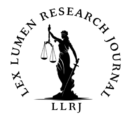Written by Pratiksh Sharma,
2nd Year Student, ILC, Faculty of Law,
University of Delhi
December 2024
The Bharatiya Nyaya Sanhita (BNS), 2023, marks a pivotal shift in Bharat’s criminal law landscape. With its enactment, the colonial-era Indian Penal Code (IPC) has been replaced, reflecting a conscious effort to shed the vestiges of colonialism. Among its most significant reforms is the repeal of Section 124A IPC, which criminalized sedition, and the introduction of Section 152, a provision reframing offences against the state as treason.
This legislative evolution signifies more than a mere terminological change—it reflects Bharat’s aspiration to align its legal framework with constitutional values while safeguarding state security. However, this transformation raises critical questions: Does Section 152 effectively address the misuse concerns associated with Section 124A? Can it achieve its goals without infringing on democratic freedoms? These questions form the bedrock of this analysis.
SECTION 152: A PARADIGM SHIFT FROM SEDITION TO TREASON
The introduction of Section 152 symbolizes a deliberate shift in the state’s approach to combating threats against national integrity. While Section 124A IPC broadly targeted “disaffection” against the government, Section 152 narrows the focus to acts that endanger the sovereignty, unity, and integrity of Bharat. This transition attempts to address long-standing criticisms of sedition laws, particularly their vague language and susceptibility to misuse.
Despite these improvements, Section 152 keeps certain ambiguities. Phrases like “endanger sovereignty” or “threaten unity” require clear definitions to ensure precise application. Without explicit safeguards, there is a risk that this provision, like its predecessor, could be misused to stifle dissent rather than address genuine threats.
The challenges of misuse are underscored by historical precedents. Under Section 124A, political opponents, journalists, and activists often faced charges for exercising their democratic right to critique the state. For instance, cases such as Kedar Nath Singh v. State of Bihar (1962) set up that sedition applies only to speech inciting violence or public disorder. However, these judicial clarifications often did not prevent frivolous prosecutions. To mitigate similar risks under Section 152, the inclusion of procedural safeguards such as mandatory judicial oversight before filing charges is essential.
CONSTITUTIONAL BALANCE: PROTECTING FREEDOM AND SECURITY
The interplay between freedom of speech under Article 19(1)(a) and reasonable restrictions under Article 19(2) forms the constitutional framework within which Section 152 operates. The provision’s success depends on its ability to balance these competing priorities, guided by the principle of proportionality.
This doctrine mandates that:
- Legitimate Aim: The restriction must address a genuine threat to state security or public order.
- Rational Connection: The measure should have a direct and logical link to achieving this aim.
- Minimal Restriction: The limitation should impose the least possible burden on individual freedoms.
For Section 152, this means distinguishing between acts of treason and legitimate dissent. Historical misuse of sedition laws shows the perils of conflating criticism with disloyalty. In Balwant Singh v. State of Punjab (1995), the Supreme Court held that raising anti-state slogans without an intention to incite violence does not constitute sedition. Applying this reasoning to Section 152, acts of symbolic protest or political critique must be exempt from its purview unless accompanied by tangible threats to the state.
International experiences offer valuable insights. In the United States, the “clear and present danger” test, articulated in Schenck v. United States (1919), ensures that speech is restricted only when it poses an imminent threat to national security. Similarly, the United Kingdom abolished sedition laws in 2009, emphasizing that modern democracies must prioritize free expression over archaic offences. Bharat’s Section 152 can benefit from adopting these principles, emphasizing precision and proportionality in its application.
THE WAY FORWARD: STRENGTHENING SECTION 152 THROUGH REFORMS
For Section 152 to fulfill its constitutional and legislative aims, certain reforms are imperative. These reforms must address both procedural gaps and substantive ambiguities to ensure the provision’s fair implementation.
- Clarifying Key Terminology: Terms like “sovereignty” and “unity” must be defined with precision to prevent subjective interpretation. Clear definitions would delineate the scope of Section 152, ensuring that only genuine threats are prosecuted.
- Introducing Procedural Safeguards: Mandatory judicial oversight before registering complaints under Section 152 would act as a crucial check against misuse. Drawing inspiration from the 279th Law Commission Report (2023), safeguards such as preliminary inquiries by senior judicial officers can filter frivolous cases and uphold justice.
- Aligning with International Standards: Incorporating the “imminent threat” principle would limit Section 152’s application to scenarios where there is a demonstrable risk of harm. This approach would align Bharat’s legal framework with democratic norms while addressing genuine security concerns.
- Periodic Legislative Review: Showing a mechanism for regular evaluation of Section 152’s implementation would ensure its continued relevance and alignment with constitutional values. Such reviews could assess trends in prosecution, show patterns of misuse, and recommend corrective measures.
- Promoting Public Awareness: Educating citizens about the scope and limitations of Section 152 can empower them to challenge arbitrary application. Transparent implementation would foster public trust in the law’s fairness and integrity.
CONCLUSION: A LITMUS TEST FOR CONSTITUTIONAL VALUES
The replacement of Section 124A IPC with Section 152 BNS is more than a legislative reform—it is a reflection of Bharat’s aspiration to redefine its legal identity in alignment with its democratic ethos. While the shift from sedition to treason addresses many historical criticisms, the provision’s true success lies in its implementation.
Section 152 has the potential to serve as a constitutional compass, balancing the imperatives of state security with the fundamental right to free expression. However, achieving this balance requires vigilance, precision, and reform. By learning from historical experiences and international practices, Bharat can ensure that Section 152 becomes a model for justice, fostering both national security and individual freedoms.
The journey of Section 152 represents an opportunity for Bharat to lead by example, demonstrating that even in the face of complex challenges, constitutional values can prevail. Its implementation will serve as a litmus test for the resilience of Bharat’s democracy and its commitment to justice.
REFERENCE:
- Indian Penal Code, Vol. I, (11th Ed.) by RA Nelson (Lexis Nexis)
- A Treaties on The Law of Sedition and Cognate Offences in British Indian by Donghue & Walter Russell
- Constitution of India
- Report No. 279 “Usage of The Law of Sedition “By Law Commission of India
- Bhartiya Nyaya Sanhita, Act No. 45 Of 2023.
- An Embezzled Section Under Surveillance: (124A) Sedition by U. Raj and S. Shandilya (Burnished Law Journal)
- The Law of Sedition and Indian : An Evolutionary Overview by S. Bhattacharya.
- Sedition Under Section 124A Of the Indian Penal Code : An Analysis by P. Kaur.
- Kedar Nath v. State of Bihar, AIR 1962 SC 955.


